Back in the olden days, fuel trucks had a chain suspended from the axle to the ground to dissipate the explosive static charging fuel will buildup from sloshing around inside a tanker.
I remember them being banned, but what replaced the chains?
Back in the olden days, fuel trucks had a chain suspended from the axle to the ground to dissipate the explosive static charging fuel will buildup from sloshing around inside a tanker.
I remember them being banned, but what replaced the chains?
The process of grounding the tanker is still carried out. The first thing they do before unloading the fuel is ground the tanker to earth in order to discharge all the static charge through a safe path. This process of governed by various standards of operation. An example of the grounding setup looks like the following:

Source: http://www.newson-gale.com/knowledgebase/ettg22/tank_truck_grounding_1.asp